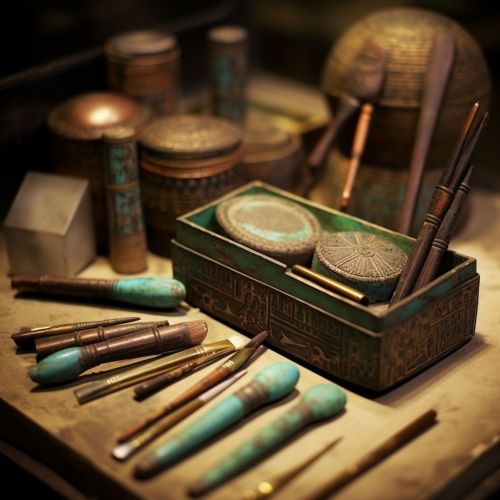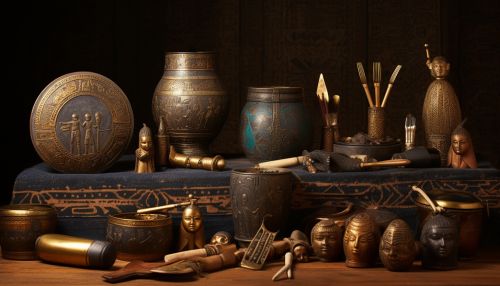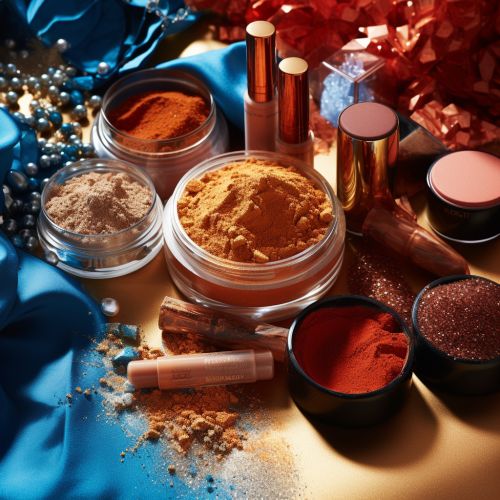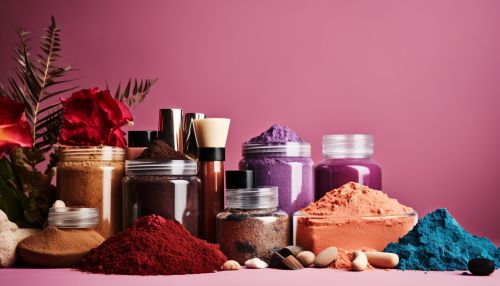Cosmetics
History of Cosmetics
Cosmetics have been used for thousands of years, with the earliest evidence of cosmetic use dating back to ancient Egyptian and Sumerian cultures. These early societies used cosmetics not only for aesthetic purposes, but also for religious rituals and medicinal applications.


In ancient Egypt, both men and women used cosmetics. They applied kohl to their eyes to protect them from the harsh desert sun and to ward off evil spirits. They also used red ochre as a lip and cheek stain, and henna to dye their hair and nails.
The Greeks and Romans also used cosmetics, but their use was more restricted. In ancient Rome, for example, only women of the upper classes were allowed to wear makeup. The Romans used cosmetics made from lead, mercury, and other toxic substances, which often led to serious health problems.
In the Middle Ages, the use of cosmetics was largely frowned upon, especially in Western Europe. The Church viewed the use of makeup as sinful and vain. However, in the Renaissance, the use of cosmetics began to become more acceptable, especially among the upper classes.
In the 19th century, the industrial revolution led to the mass production of cosmetics. This made cosmetics more affordable and accessible to the general public. The 20th century saw the rise of the modern cosmetics industry, with companies like Estée Lauder, Revlon, and L'Oréal becoming household names.
Types of Cosmetics
There are many different types of cosmetics, each designed to enhance a specific feature or aspect of the body. Some of the most common types of cosmetics include:
- Foundation: This is a skin-colored makeup applied to the face to create an even, uniform complexion, to cover flaws, and, sometimes, to change the natural skin tone.
- Concealer: This is a type of cosmetic that is used to mask dark circles, age spots, large pores, and other small blemishes visible on the skin.
- Lipstick: This is a cosmetic product containing pigments, oils, waxes, and emollients that apply color, texture, and protection to the lips.
- Mascara: This is a cosmetic commonly used to enhance the eyelashes. It may darken, thicken, lengthen, and/or define the eyelashes.
- Eyeliner: This is a cosmetic used to define the eyes. It is applied around the contours of the eyes to create a variety of aesthetic effects.
- Blush: This is a cosmetic for coloring the cheeks in varying shades, or the skin in general.
- Nail polish: This is a lacquer that can be applied to the human fingernail or toenails to decorate and protect the nail plates.
- Perfume: This is a mixture of fragrant essential oils or aroma compounds, fixatives and solvents, usually in liquid form, used to give the human body, animals, food, objects, and living spaces a pleasant scent.
Cosmetic Ingredients
Cosmetics are made from a variety of ingredients, which can be broadly classified into two categories: organic and inorganic compounds. Organic compounds are carbon-based molecules, typically derived from plants and animals, while inorganic compounds are usually minerals or synthesized compounds.


Common organic ingredients in cosmetics include oils (such as olive oil, coconut oil, and jojoba oil), waxes (such as beeswax and candelilla wax), and proteins (such as keratin and collagen). These ingredients are often used for their moisturizing, emollient, and protective properties.
Inorganic ingredients in cosmetics often include pigments (such as titanium dioxide and iron oxides), preservatives (such as parabens and formaldehyde-releasing preservatives), and pH adjusters (such as citric acid and sodium hydroxide). These ingredients are used to provide color, prevent microbial growth, and maintain the product's stability and effectiveness.
It's important to note that some cosmetic ingredients can cause allergic reactions or other health problems. For example, parabens have been linked to hormonal disruption, while formaldehyde-releasing preservatives can cause skin irritation and allergies.
Cosmetic Industry
The global cosmetics industry is a multi-billion dollar industry, with a wide range of companies involved in the production, distribution, and sale of cosmetic products. Some of the largest and most well-known cosmetic companies include L'Oréal, Estée Lauder, and Procter & Gamble.
The cosmetic industry is heavily regulated by government agencies such as the U.S. Food and Drug Administration (FDA) and the European Medicines Agency (EMA). These agencies set standards for cosmetic safety, labeling, and advertising.
In recent years, there has been a growing trend towards "green" or "natural" cosmetics. These products are made with natural and/or organic ingredients, and are often marketed as being safer and more environmentally friendly than traditional cosmetics.
